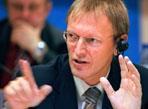EU scientists have put forward a wish list of 23 large-scale research infrastructures that will could be developed in the seventh framework programme.
EU scientists have put forward a wish list of 23 large-scale research infrastructures that will be needed in the coming decade and could be developed over the course of the seventh framework programme for research (FP7; see Chemistry World, May 2005, p7).
Research infrastructures are collections of tools that provide essential services to the scientific community for basic or applied research. These tools can be spread across a number of different countries and include libraries, databases, communication networks, satellites and telescopes.
The European strategy forum on research infrastructures (ESFRI) selected the 23 from a list of 149 proposals that were submitted to the forum. Although none of the infrastructures is solely focused on chemistry, quite a few will likely prove of benefit to chemical researchers, especially those working in the nanotechnology and pharmaceutical industries.
The chemistry-related infrastructures include:
- Pan-European research infrastructure for nano-structures - this will aim to promote research into reducing the scale of electronic components and circuits
- Bioinformatics infrastructure for Europe - this will aim to provide free bioinformatics data, especially for pharmaceutical research
- European network of bio-banks and genomic resources - this will encompass collections of samples and reagents for identifying disease-relevant genes
- Infrastructure for functional analysis of a whole model mammalian genome - this will involve the large-scale and comprehensive phenotyping of medically-relevant mouse models, to help investigations into the molecular mechanisms of disease.
Janez Potocnik, European commissioner for science and research, says research infrastructures are a key asset in its proposals for the seventh framework programme.
’In this competition for excellence, we must adopt a common European approach, and define clear priorities to fund the most important projects over the next 10 to 20 years,’ said Potocnik. ’I welcome ESFRI’s input in this crucial area.’

ESFRI was launched in April 2002 to provide a focus for discussions on research infrastructures, and brings together representatives of the 25 EU member states and seven other European countries associated with the framework programme.
Jon Evans






No comments yet